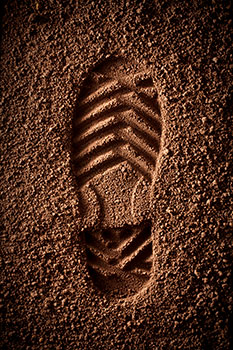Introduction
You've heard the phrase "covering your tracks" before, but you probably didn't take it literally – and neither do some criminals! "Covering your tracks" refers to when the perpetrator of a crime hides or removes evidence, such as two people wiping their fingerprints off a doorknob after breaking into a home. Cleaning the prints off the handle might make the burglars think they're covering their tracks, but other evidence might be trailing behind. Suspects can be linked to crime scenes by impressions left by their shoes and tires tracks.
In this lesson, you will learn how investigators find, collect, and analyze evidence left behind by shoes and tires.


Following successful completion of this lesson, students will be able to...
- Create casts of footwear.
- Analyze tire and footwear impressions to note distinctive features and classify them as class or individual characteristics.
Essential Questions
- What information can we gather from tire or footwear impressions?
- Why might foot prints, bite marks and tire tracks be difficult to conceal?
Enduring Understandings
- An exchange of material will occur whenever someone is at a crime scene (Locard's Exchange Principle). Materials left behind (or carried away) from the crime scene as well as markings and impressions from those items can be linked to an individual or item.
- Forensic results are open to the interpretation and subject to the limitation of the pathologist's knowledge and methods.
The above objectives correspond with the Alabama Course of Study: Forensic Science and Crime Scene Investigation standards: 23.